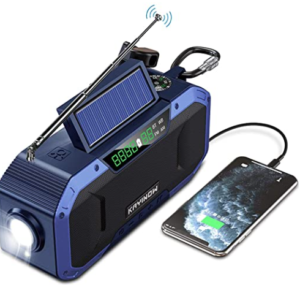Step Two Build an Emergency Survival Kit
Your emergency survival kit should have everything you and your family would need to be safe and take care of yourselves for at least three days immediately following an emergency.
The following list is broken down into the essentials, items you may need to meet your family’s unique needs, and items to have ready in case you have to leave your home.
WHAT TO PUT IN YOUR SURVIVAL KIT
Essentials
- Food (non-perishable and easy-to-prepare items, enough for 3 days) and a manual can opener
- Bottled water (4 litres per person for each day)
- Medication(s)
- Flashlight
- Radio (crank or battery-run)
- Extra batteries
- First-aid kit
- Candles and matches/lighter
- Hand sanitizer or moist towelettes
- Important papers (identification, contact lists, copies of prescriptions, etc.)
- Extra car keys and cash
- Whistle (to attract attention, if needed)
- Zip-lock bag (to keep things dry)
- Garbage bags
Special Considerations
- Items for babies and small children—diapers, formula, bottles, baby food, comfort items
- Prescription medication
- Medical supplies and equipment
- Pet food and supplies
- Any other items specific to your family’s needs
Extra Supplies for Evacuation
- Clothes, shoes
- Sleeping bags or blankets
- Personal items (soap, toothpaste, shampoo, comb, other toiletries)
- Playing cards, travel games, other activities for children
OTHER TIPS
- Pack the contents of your kit in an easy-to-carry bag(s) or a case on wheels.
- Store your kit in a place that is easy to reach, and ensure that everyone in your family knows where it is.
- Your kit does not have to be built overnight. Spread your shopping over a few weeks. Purchase a few items every time you go to the store.
- Your water supply is meant to cover what you would drink as well as what you might need for food preparation, hygiene and dishwashing.
- Check and refresh your kit twice a year—when the clocks shift to/from daylight savings time is a good time. Check all expiry dates and replace food and water with a fresh supply. Check batteries and replace as needed.
- Keep your cell phone or mobile device fully charged.
Step 1: Make a Plan | Step 2: Build A Kit | Step 3: Be Informed






